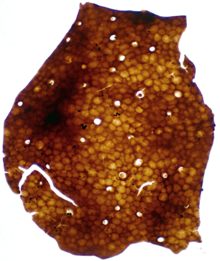Phytoclast
Appearance


Phytoclasts are microscopic plant fragments present in the fossil record, usually found in palynological preparations and acid macerations, and include banded tubes and various nematophytes.[1]
References
- ^ Gensel, P. G.; Johnson, N. G.; Strother, P. K. (1990). "Early Land Plant Debris (Hooker's "Waifs and Strays"?)". PALAIOS. 5 (6): 520–547. doi:10.2307/3514860. JSTOR 3514860.
